CLAT
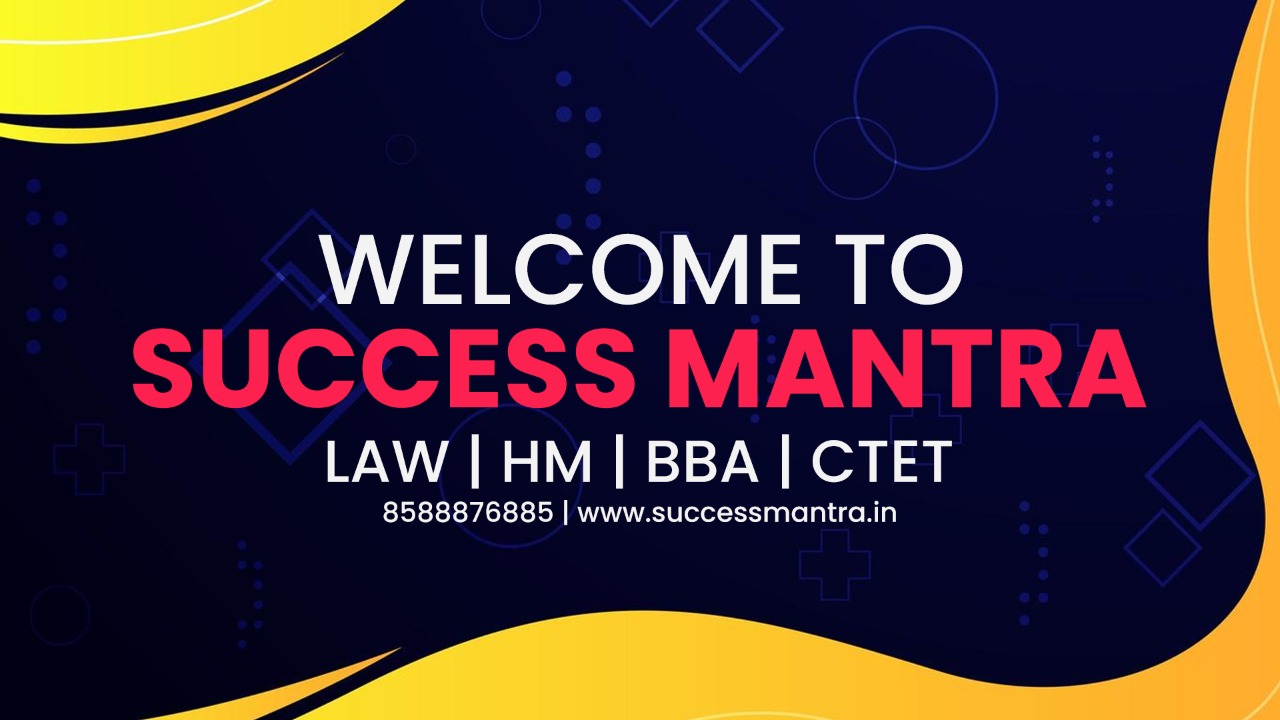
Talk To Our Counselor
Courses
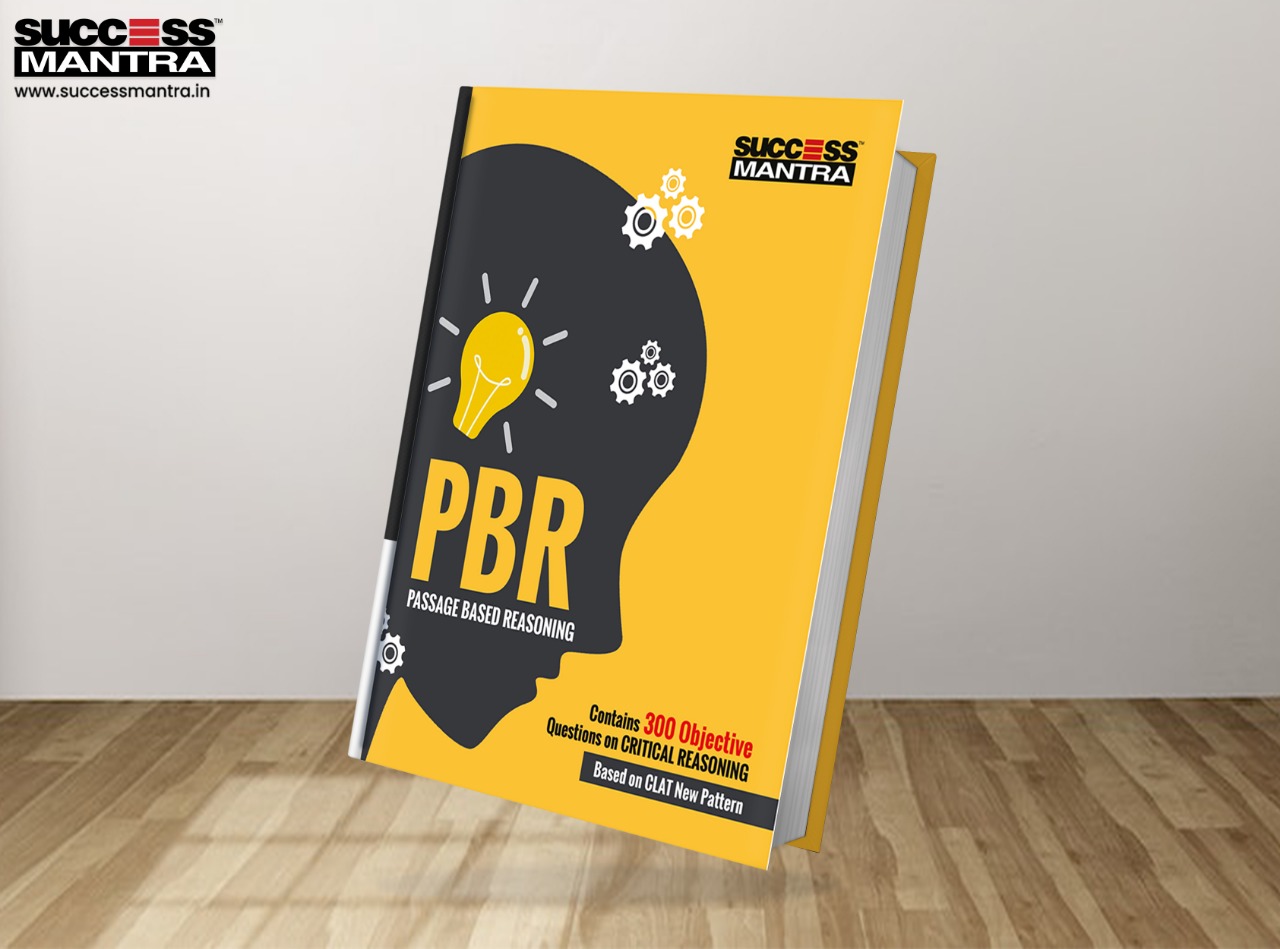
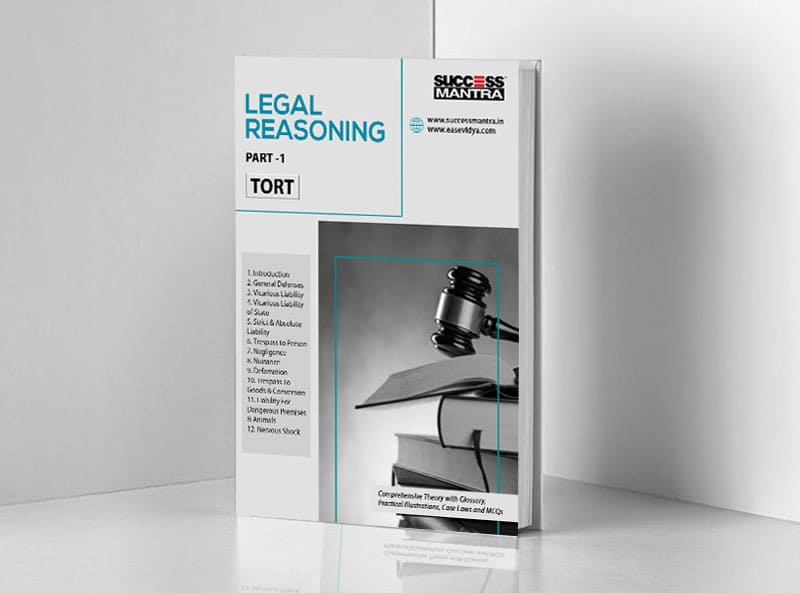
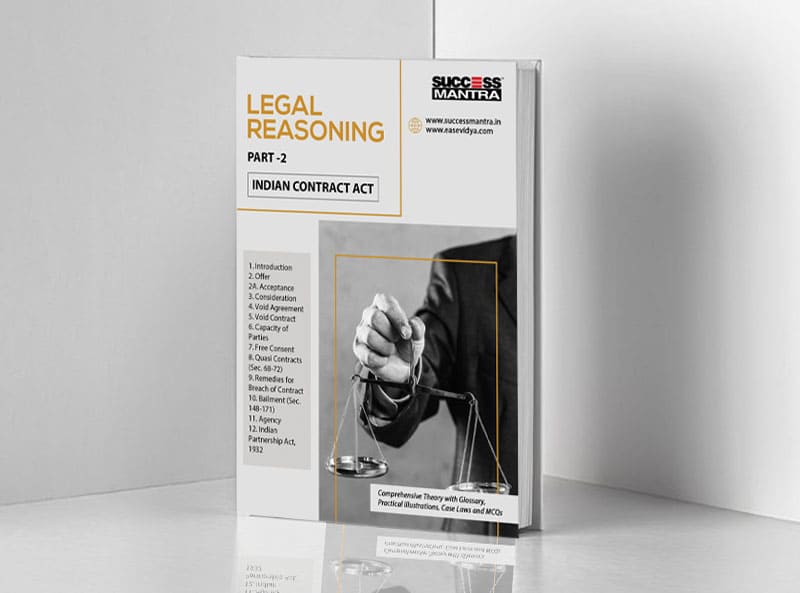
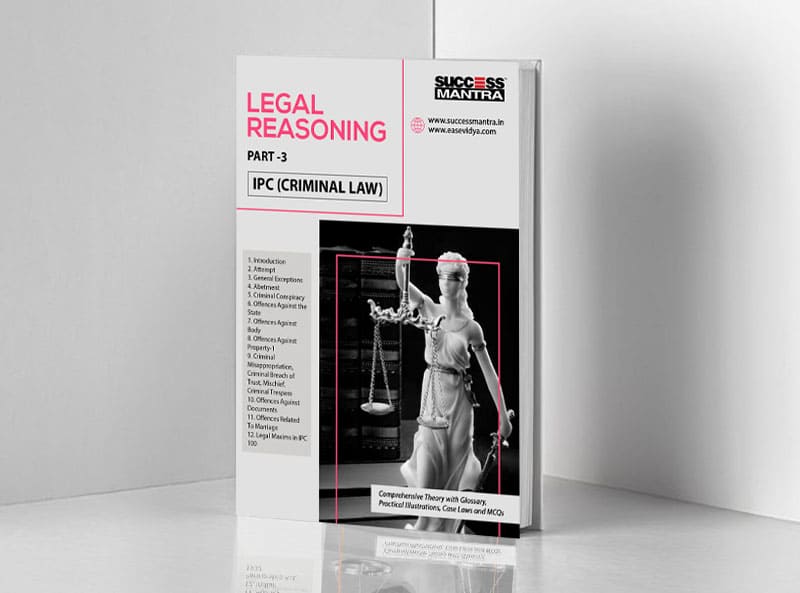
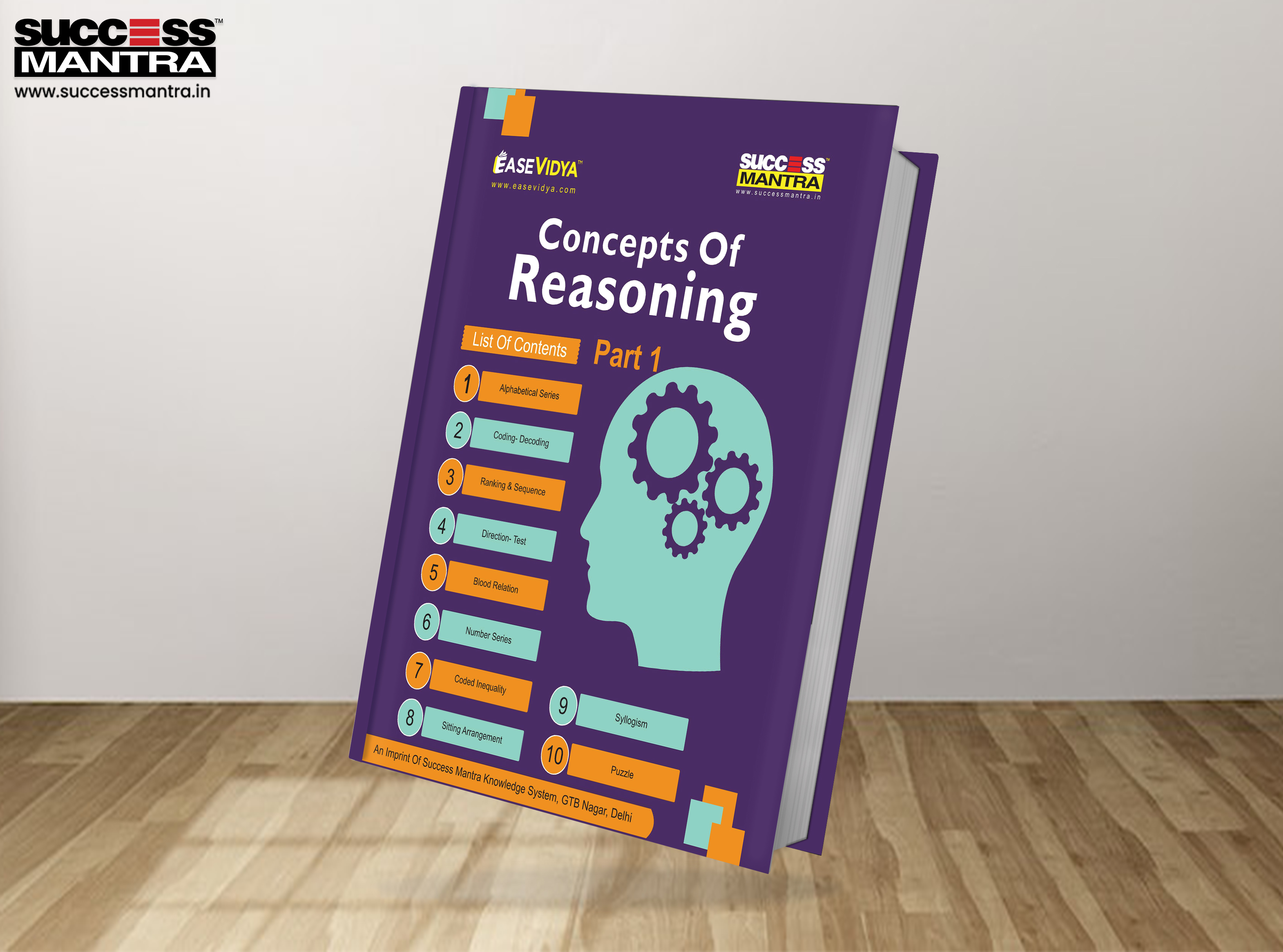
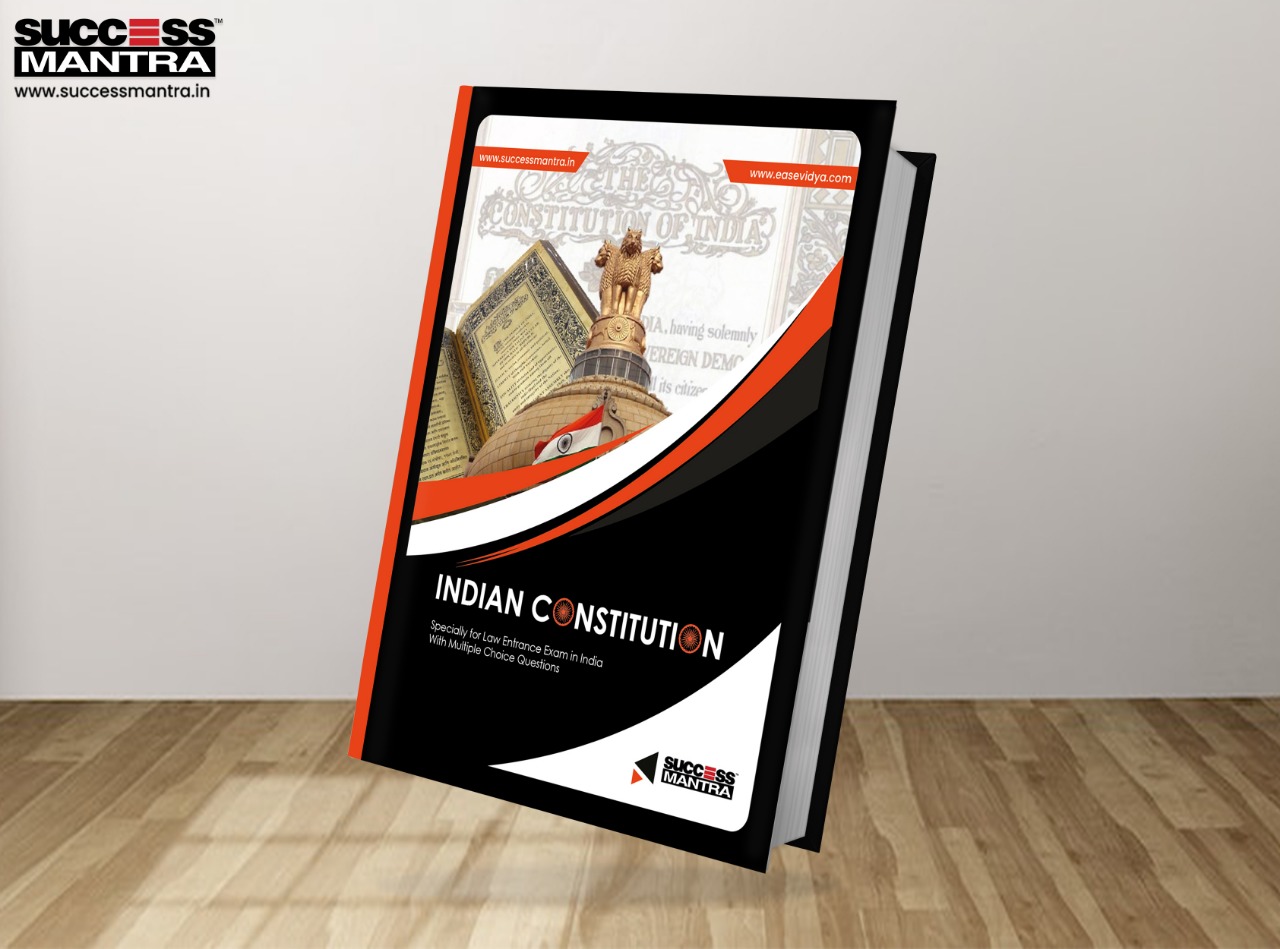
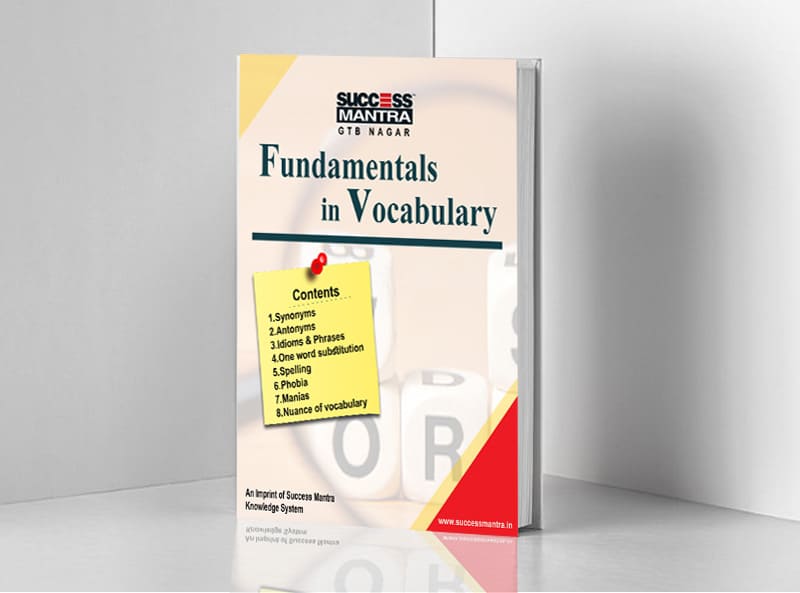
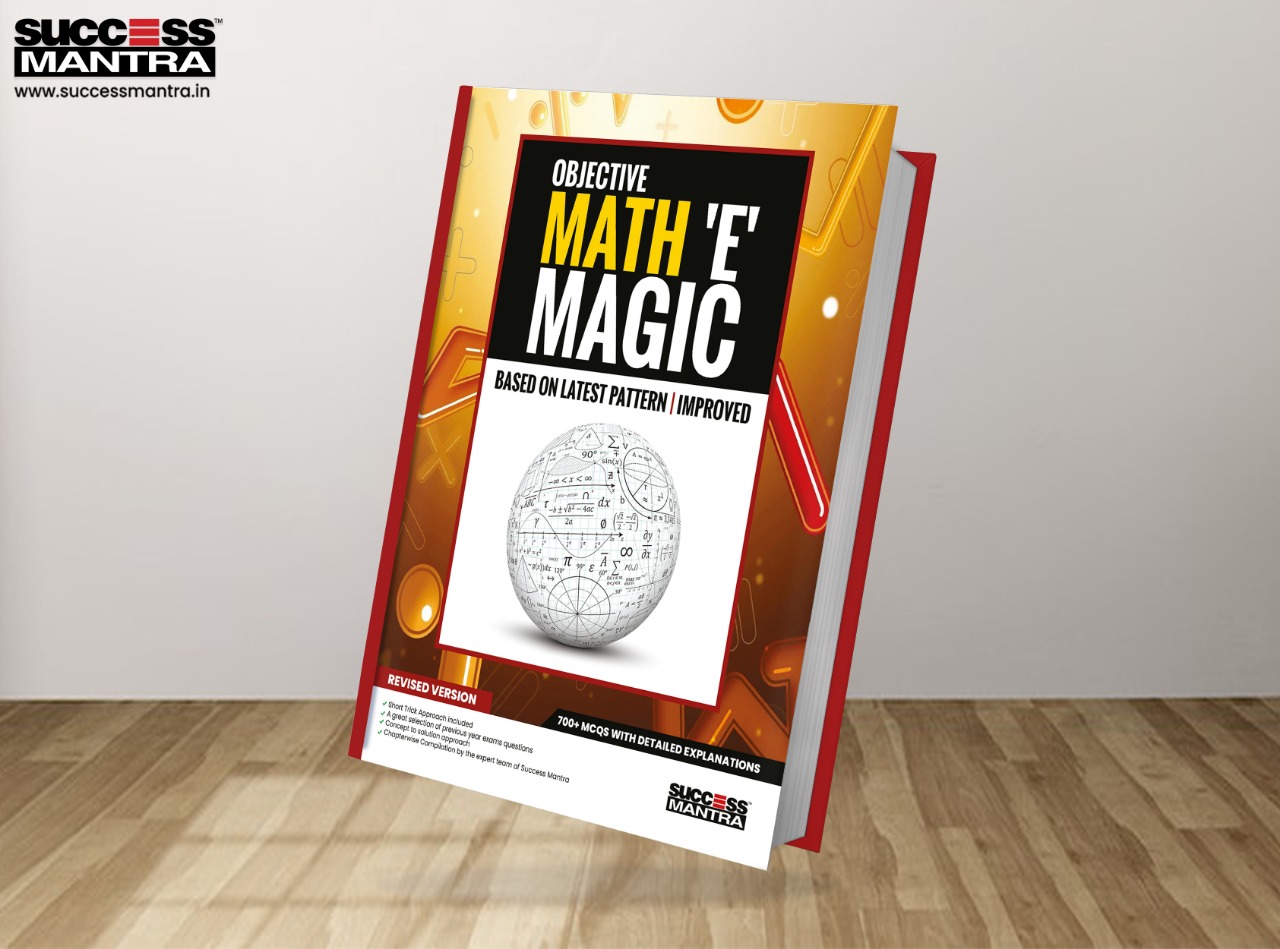








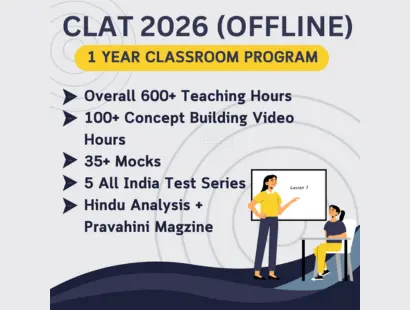
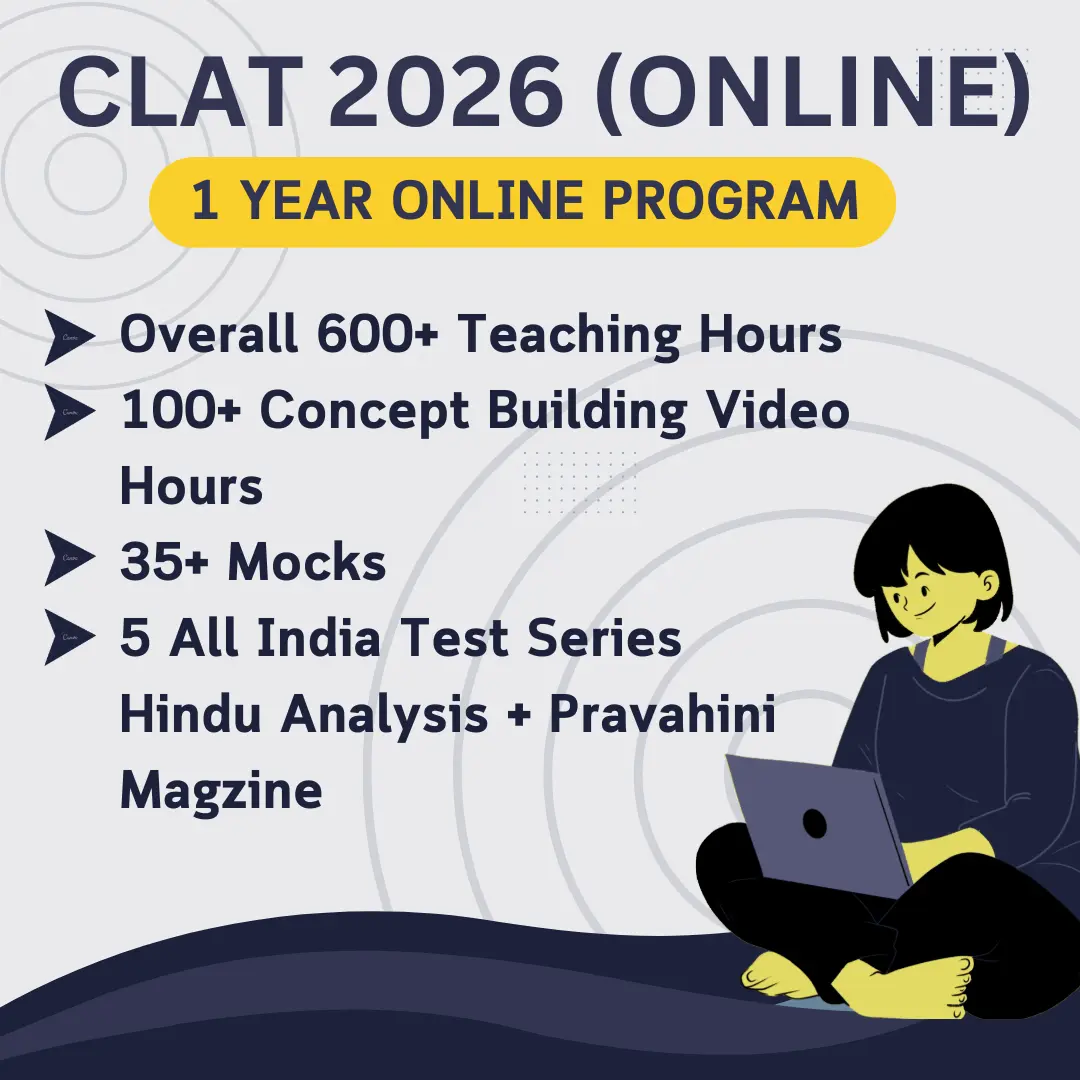
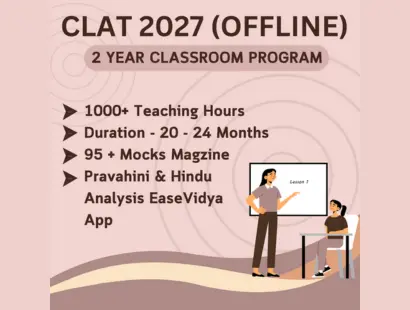
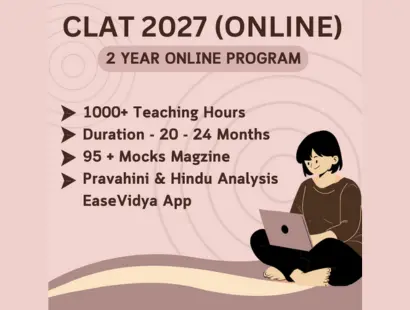




We are always happy to get feedback from our valued users so that we can continue to improve our service(s).













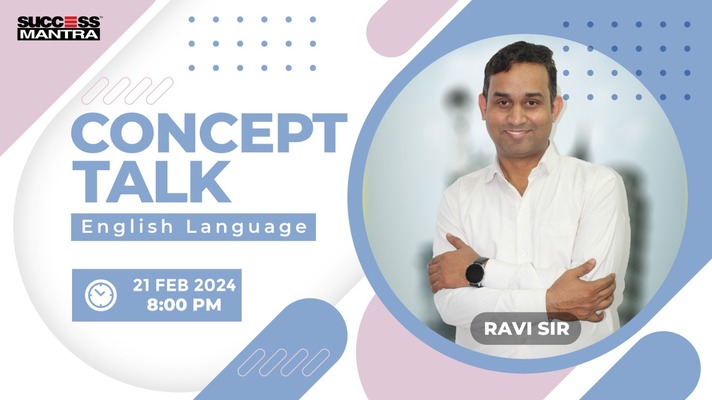

We are always happy to get feedback from our valued users so that we can continue to improve our service(s).
Legal Faculty is the most wonderful and genuine person I've ever seen. He's a true inspiration! He is the best law professor I've ever seen in my legal career. A person is never great merely in terms of intellect, but also in terms of heart, and you have actually accomplished both. I count myself lucky to be a student of yours through this Best CLAT Coaching in Delhi.

Harsh Raj
AIR 70, CLAT
There are no better teachers to be found anywhere else. Everyone, from the management to the lecturers, is honest and dedicated to one goal: to provide the greatest possible opportunity for the students. They provide detailed study materials, regular assessments to assist us exercise, and doubt-clearing sessions for all of us to benefit from. In a word, if you're looking for Best CLAT Coaching in Delhi, go no further. You won't find a better deal than this.

Ishita Bhardwaj
AIR 817, CLAT
I'm incredibly lucky I got to enrol in this coaching. Because it helped me in getting into the college of my choice! I was able to achieve such a high rank thanks to their comprehensive study materials, highly skilled, expert teachers, and regular tests! Success Mantra was quite helpful to me during my trip. Thank you to the entire Best CLAT Coaching in Delhi team.

Simran Sandhu
AIR 157, CLAT
I can't thank the Success Mantrastaff enough for always being so helpful. They rescheduled lessons to accommodate our schools and tutors, and they provided backup lectures, doubt classes, and revision classes. In addition, there are new pattern-based mock tests. And it all helped me enormously in my preparation. Best CLAT Coaching in Delhi by Success Mantrais highly recommended.

Siddharth
AIR 314, CLAT
My experience at Success Mantra is great and memorable. The mentors at this coaching helped us enhance my academic and interpersonal skills. I was good into academics but Success Mantra Mentors helped me to alleviate my subject under-standing with utmost sincerity. I am thankful to this team.

Anmol Sai
AIR 37, CLAT
I was the classroom program student of Success Mantra, Delhi. I really feel that the study curriculum at this coaching was very helpful. They always provide you a competitive environment which propels you to work hard and harder, resulting into better performance. Thanks to everyone.

Sumit Kumar Gupta
CLAT AIR - 4 | AILET AIR - 10
I joined Success Mantra for my CLAT 2023 attempt and the dedicated team there helped me achieving my goal. The classroom study material boosted my scores, both in mocks as well as in the actual CLAT. I would like to express my gratitude to the team Success Mantra for helping me in getting my dream NLU.
Piyush Gupta
AIR 8, CLAT
Success Mantra was significant in helping me in passing CLAT and getting admission to a prestigious university. In terms of conceptual clarity and syllabus coverage, their accommodating classroom coaching setting and doubt-clearing sessions were effective. The extensive material ensured that I didn't have to search for resources too hard. Success Mantra's Best CLAT Coaching in Delhi has helped me tremendously.

Shreshth Goswami
AIR 91, CLAT
Legal Faculty is the most wonderful and genuine person I've ever seen. He's a true inspiration! He is the best law professor I've ever seen in my legal career. A person is never great merely in terms of intellect, but also in terms of heart, and you have actually accomplished both. I count myself lucky to be a student of yours through this Best CLAT Coaching in Delhi.

Harsh Raj
AIR 70, CLAT
There are no better teachers to be found anywhere else. Everyone, from the management to the lecturers, is honest and dedicated to one goal: to provide the greatest possible opportunity for the students. They provide detailed study materials, regular assessments to assist us exercise, and doubt-clearing sessions for all of us to benefit from. In a word, if you're looking for Best CLAT Coaching in Delhi, go no further. You won't find a better deal than this.

Ishita Bhardwaj
AIR 817, CLAT
I'm incredibly lucky I got to enrol in this coaching. Because it helped me in getting into the college of my choice! I was able to achieve such a high rank thanks to their comprehensive study materials, highly skilled, expert teachers, and regular tests! Success Mantra was quite helpful to me during my trip. Thank you to the entire Best CLAT Coaching in Delhi team.

Simran Sandhu
AIR 157, CLAT
I can't thank the Success Mantrastaff enough for always being so helpful. They rescheduled lessons to accommodate our schools and tutors, and they provided backup lectures, doubt classes, and revision classes. In addition, there are new pattern-based mock tests. And it all helped me enormously in my preparation. Best CLAT Coaching in Delhi by Success Mantrais highly recommended.

Siddharth
AIR 314, CLAT
My experience at Success Mantra is great and memorable. The mentors at this coaching helped us enhance my academic and interpersonal skills. I was good into academics but Success Mantra Mentors helped me to alleviate my subject under-standing with utmost sincerity. I am thankful to this team.

Anmol Sai
AIR 37, CLAT
I was the classroom program student of Success Mantra, Delhi. I really feel that the study curriculum at this coaching was very helpful. They always provide you a competitive environment which propels you to work hard and harder, resulting into better performance. Thanks to everyone.

Sumit Kumar Gupta
CLAT AIR - 4 | AILET AIR - 10
I joined Success Mantra for my CLAT 2023 attempt and the dedicated team there helped me achieving my goal. The classroom study material boosted my scores, both in mocks as well as in the actual CLAT. I would like to express my gratitude to the team Success Mantra for helping me in getting my dream NLU.
Piyush Gupta
AIR 8, CLAT
Success Mantra was significant in helping me in passing CLAT and getting admission to a prestigious university. In terms of conceptual clarity and syllabus coverage, their accommodating classroom coaching setting and doubt-clearing sessions were effective. The extensive material ensured that I didn't have to search for resources too hard. Success Mantra's Best CLAT Coaching in Delhi has helped me tremendously.

Shreshth Goswami
AIR 91, CLAT
Overview
CLAT stands for Common Law Admissions Test
CLAT- UG is one of the most important entrance exams for admissions to law courses like Five-Year Integrated LL. B program. The exam is primarily conducted for admission to law courses offered by participating NLUs including the top law colleges in India as per National Institutes Ranking Framework (NIRF). However, CLAT scores are also accepted by top private law colleges in India.
CLAT Highlights 2026
By looking at the current year’s key details, CLAT 2025 can be understood from the table given below:
|
PARTICULARS |
DETAILS |
|
CLAT Conducting Body |
Consortium Of National Law Universities |
|
CLAT 2026 Exam Date |
December 2025 |
|
No of Questions |
120 Questions |
|
Time Duration |
2 Hours Or 120 Minutes |
|
CLAT Exam Mode |
Offline |
|
Type of Questions |
Objective Type (Comprehension and Passage Based) |
|
Courses Offered Under CLAT UG 2025 |
Admissions for below mentioned program: -
|
|
CLAT Total Seats |
3000 Seats (Approx.) |
|
Official Website |
|
|
Related Blogs |
https://www.successmantra.in/blog/best-books-for-clat-preparation
https://www.successmantra.in/blog/-clat-ug-2024--two-month-exam-preparation-strategy |
|
Blog Website Link |
https://www.successmantra.in/blog/ https://www.successmantra.in/blog/post/exam/law-entrance5/clat--18 |
|
Success Mantra Youtube Channel Link |
CLAT is a national-level entrance exam, held in an offline mode. The question paper of CLAT for 5-year law courses is based on five subjects (Quantitative Techniques Legal Reasoning, English Language, Current Affairs including General Knowledge, and Logical Reasoning).
Around 3000 seats at the undergraduate level and around 1,000 seats at the postgraduate level are filled at the participating NLUs through the Centralized Admission Process of seat allotment.
The journey of the Common Law Admission Test began in 2008, it was when the first CLAT was conducted by NLSIU, Bangalore. Earlier to this, all national law universities had their own entrance exam but, after a petition, Common Law Admission Test (CLAT) i.e., law entrance exam for 24 National Law Universities was introduced. It includes courses like B.A LL.B, B. Com LL.B, BBA LL.B, etc., and the courses vary from college to college. CLAT is the preference of the number of students.
CLAT 2026 Important Dates
| Event | Date |
| Commencement Of Application | July 2025 |
| Deadline Of Application | October 2025 |
| Exam Date | December 2025 |
CLAT 2025 UPDATES
- Highest Score - 103.5/ 120
- Number Of Questions - English Language : 24 Questions , CA & GK - 28 Questions, Legal Aptitude - 32 Questions, Logical Reasoning - 24 Questions, Quantitative Techique - 12 Questions
-
User Reviews
-
Write Review
4.6 average based on 78 reviews.
What is CLAT?
CLAT stands for Common Law Admissions Test. It is an All India Law Entrance Examination conducted by the National Law Schools/Universities for admissions to their Undergraduate as well as Postgraduate courses. CLAT UG is conducted for admissions under the 5 year - law programme where as CLAT PG is conducted for admissions under the Masters programme.
Who is the conducting body of CLAT 2026?
The Consortium of National Law Universities will conduct the CLAT 2026. It is a permanent body based at NLSIU Bangaluru.
Can we write the CLAT Exam after completion of class XII ?
Yes, you can apply directly for CLAT Examination while appearing for class XII examination.
How can I apply for CLAT 2026?
The application form for CLAT 2026 will be filled online. The online application form can be accessed from the official website.i.e. https://consortiumofnlus.ac.in/ . Usually the application forms are made availlable in August.
How can I join Success Mantra for CLAT?
You can enquire by visiting our center “SUCCESS MANTRA, GTB Nagar” and you can also apply through our website https://www.successmantra.in/contact-us
Why should I join Success Mantra for CLAT entrance exam preparation?
Success Mantra is the pioneer of law coaching institutes in Delhi and we also have an extraordinary result in Law entrance exams. 2000+ students of our students are already studying in the top law colleges of India.
What are the program offered by Success Mantra for CLAT entrance exam?
We provide various types of programs to our students– Leader Batch (1Year Program), Foundation Batch (2 Year Program), Lear Extended Program which includes preparation tragetting other exams such as SLAT, LSAT, MHCET etc
What is the strength of questions in CLAT exam?
CLAT question paper consists of 120 Questions which includes -
- English including Comprehension: 20-26
- Legal Aptitude : 28-32
- Logical Reasoning : 22-26
- General Knowledge and Current Affairs : 28-32
- Quantitative Twchniques : 10-14
What are some Top Law Colleges in India?
The National Institutional Ranking Framework (NIRF) rankings were announced by the Ministry of Human Resource Development (MHRD) for the year 2018. This was for the first time law colleges were ranked by the ministry.
The top 10 law colleges in India are:
- National Law School of India University, Bengaluru
- National Law University, New Delhi
- NALSAR University of Law, Hyderabad
- Indian Institute of Technology, Kharagpur
- National Law University, Jodhpur
- Jamia Millia Islamia, New Delhi
- The West Bengal National University of Juridicial Sciences, Kolkata
- Ram Manohar Lohiya National Law University, Lucknow
- Symbiosis Law School, Pune
- Dr BR Ambedkar College of Law, Visakhapatnam

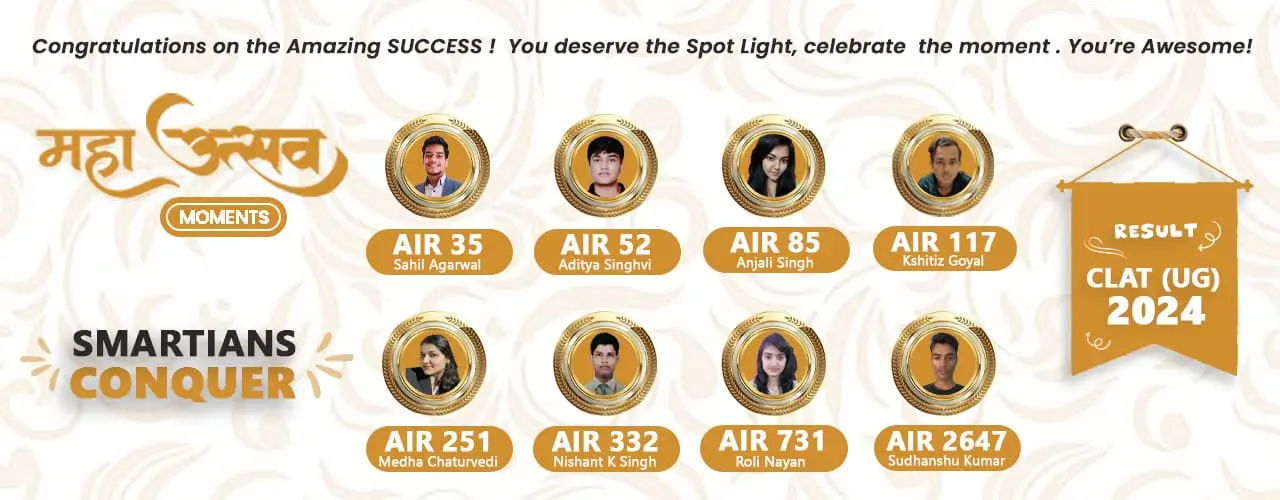
.webp)
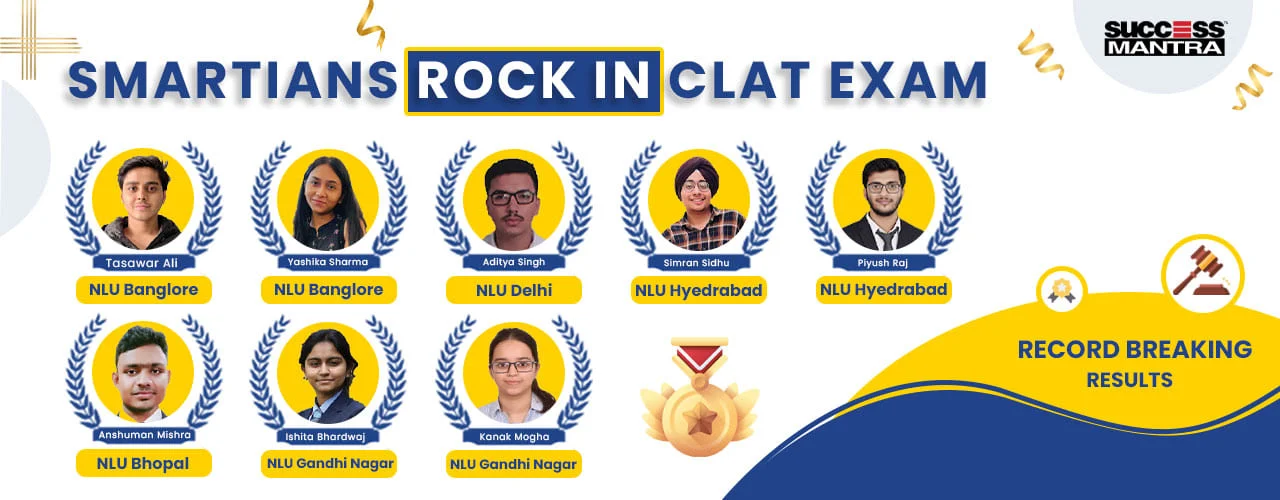
.webp)
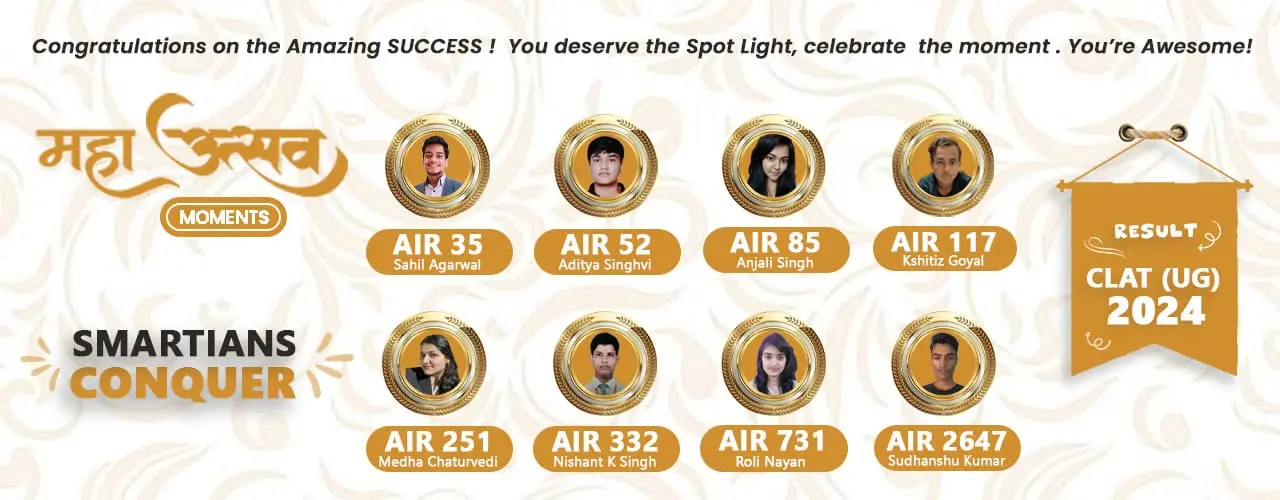
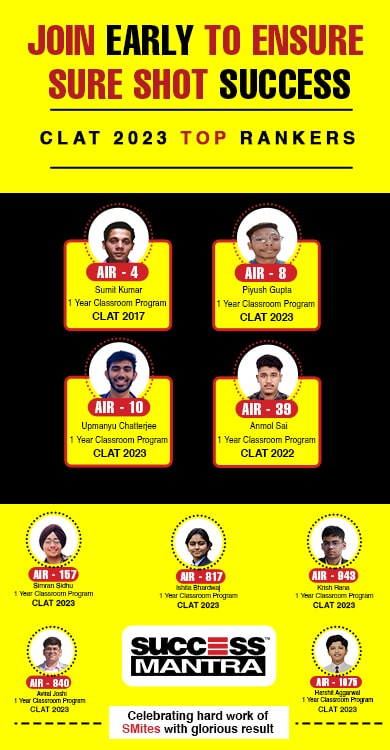





_.jpeg)
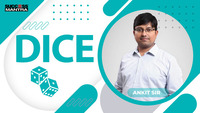
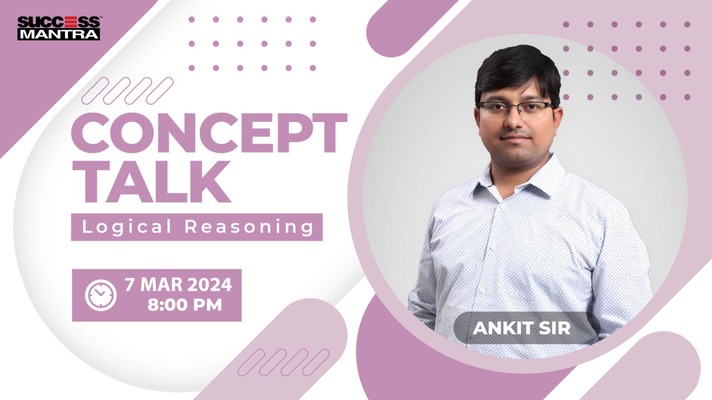
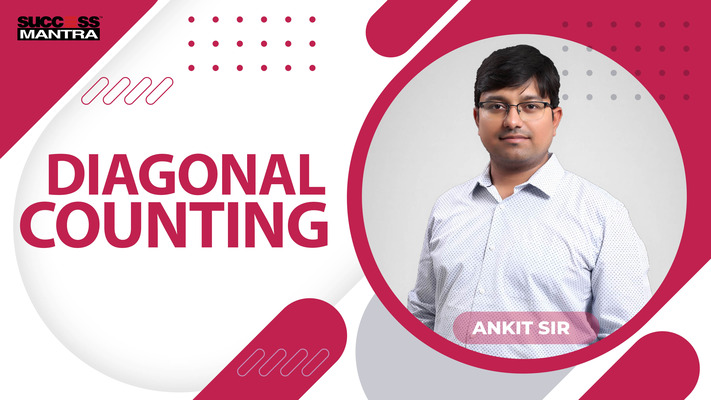
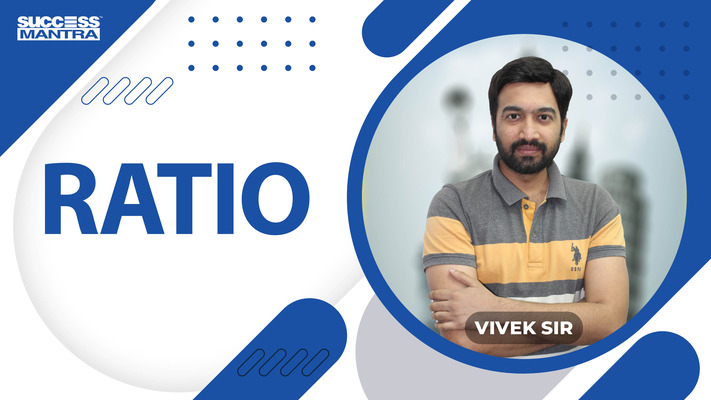
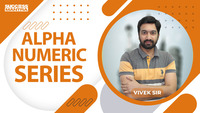

_(1)_.jpeg)


